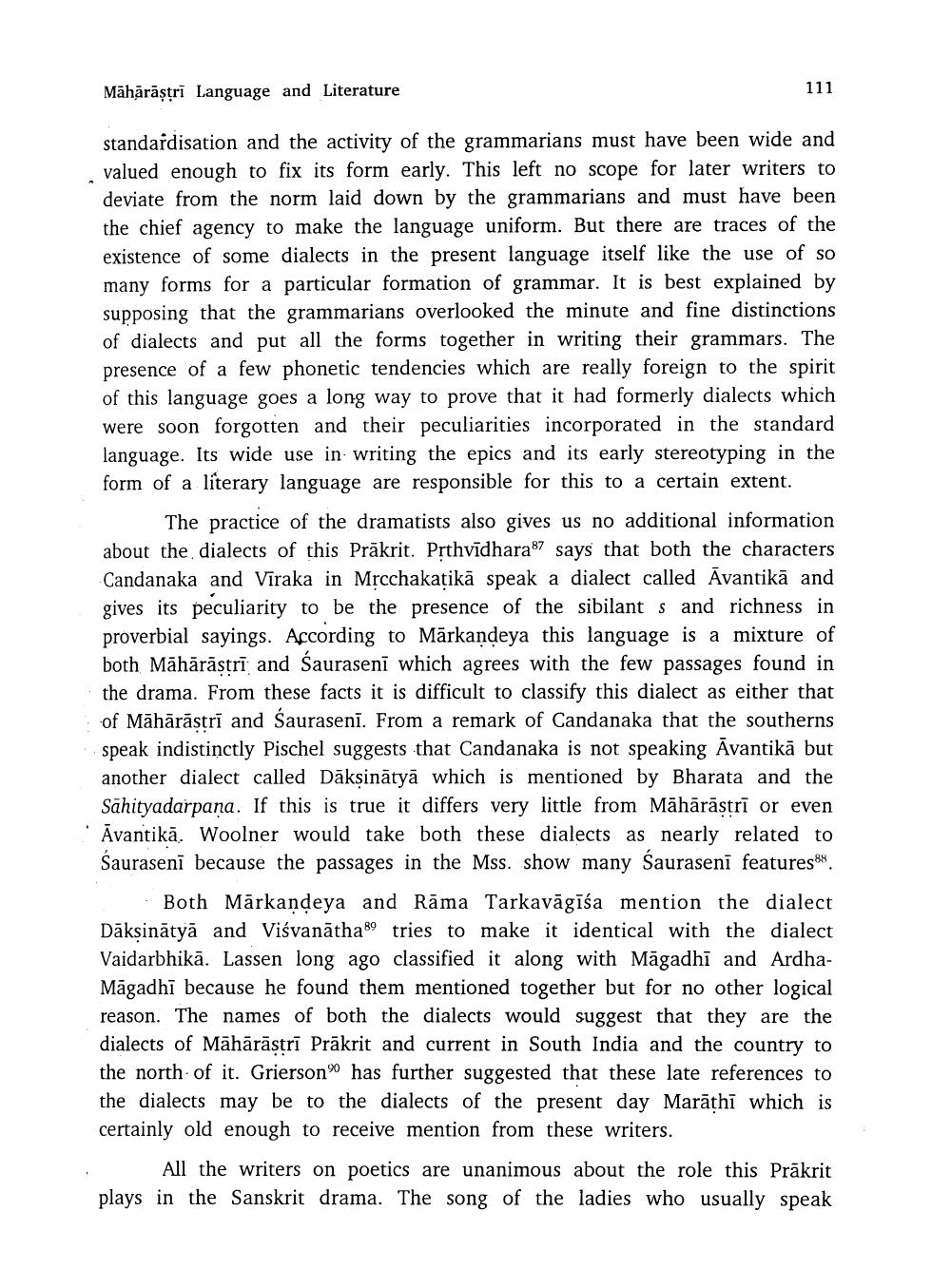________________
Māhārāștri Language and Literature
111
standardisation and the activity of the grammarians must have been wide and valued enough to fix its form early. This left no scope for later writers to deviate from the norm laid down by the grammarians and must have been the chief agency to make the language uniform. But there are traces of the existence of some dialects in the present language itself like the use of so many forms for a particular formation of grammar. It is best explained by supposing that the grammarians overlooked the minute and fine distinctions of dialects and put all the forms together in writing their grammars. The presence of a few phonetic tendencies which are really foreign to the spirit of this language goes a long way to prove that it had formerly dialects which were soon forgotten and their peculiarities incorporated in the standard language. Its wide use in writing the epics and its early stereotyping in the form of a líterary language are responsible for this to a certain extent.
The practice of the dramatists also gives us no additional information about the dialects of this Prākrit. Prthvīdhara87 says that both the characters Candanaka and Viraka in Mrcchakatikā speak a dialect called Āvantikā and gives its peculiarity to be the presence of the sibilants and richness in proverbial sayings. According to Mārkandeya this language is a mixture of both Māhārāstri and Saurasenī which agrees with the few passages found in the drama. From these facts it is difficult to classify this dialect as either that of Māhārāstrī and Saurasenī. From a remark of Candanaka that the southerns speak indistinctly Pischel suggests that Candanaka is not speaking Avantikā but another dialect called Dāksinātyā which is mentioned by Bharata and the Sāhityadarpana. If this is true it differs very little from Māhārāstrī or even Avantikā. Woolner would take both these dialects as nearly related to Sauraseni because the passages in the Mss. show many Saurasenī features88.
Both Mārkandeya and Rāma Tarkavāgīsa mention the dialect Dāksināty, and Viśvanātha89 tries to make it identical with the dialect Vaidarbhikā. Lassen long ago classified it along with Māgadhi and ArdhaMāgadhī because he found them mentioned together but for no other logical reason. The names of both the dialects would suggest that they are the dialects of Māhārāstrī Prākrit and current in South India and the country to the north of it. Grierson has further suggested that these late references to the dialects may be to the dialects of the present day Marāthī which is certainly old enough to receive mention from these writers.
All the writers on poetics are unanimous about the role this Prākrit plays in the Sanskrit drama. The song of the ladies who usually speak




